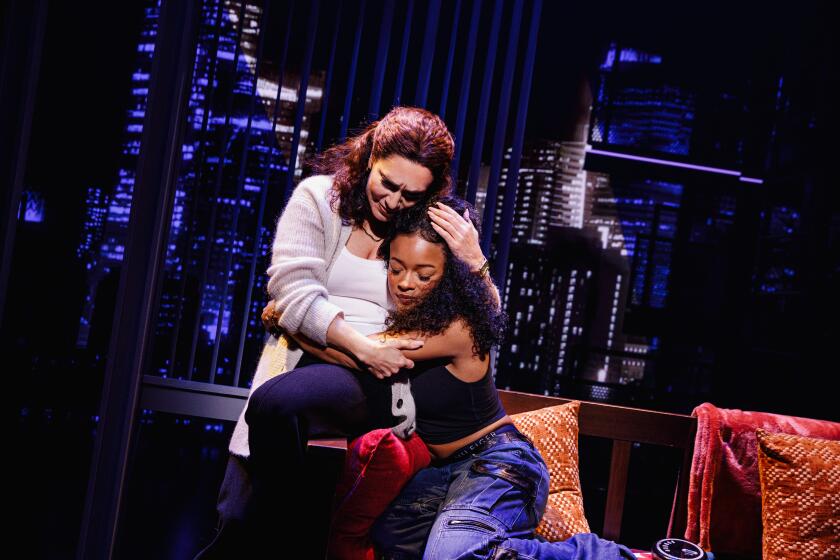DANCE REVIEW : 50-Year Graham Retrospective at UCLA
Dance is supposed to be the stuff of ephemera. Here today, gone next year. But the Martha Graham Dance Company, resplendently installed in Royce Hall at UCLA over the weekend and playing to packed houses, stood in defiance of that conventional wisdom.
As a miraculous retrospective spanning more than half a century proved, High Art doesn’t date or fade--not with champions who glory in its original impulses, and not with the very source of those impulses still commanding the troupe at age 94. Yes, 94.
For the record:
12:00 a.m. Nov. 9, 1988 For the Record
Los Angeles Times Wednesday November 9, 1988 Home Edition Calendar Part 6 Page 5 Column 4 Entertainment Desk 1 inches; 32 words Type of Material: Correction
A photo in Monday’s Calendar of the Martha Graham Dance Company was taken by Iris Schneider and one of Leontyne Price in the Tuesday paper was by Christine Walter. The credits of the Los Angeles Times photographers had been dropped.
True, the current works in these two programs represent little more than a store of Grahamisms recycled into slick theater collages. The cave of the choreographer’s heart is nowhere to be seen, for instance, in her month-old “Night Chant,” which settles for a hip switch here and a pelvic thrust there, all in the name of mythic, universal and erotized feminism, Graham’s touchstone. It brings on the forces in remarkably clever and picturesque groupings, replete with the ubiquitous Halston chic and loinclothed beefcake boys.
But, wisely, Graham allows the old works to predominate--satisfying her obligation to be current with the above spectacle and with “Temptations of the Moon,” a glitzy bacchanal of the gods led by a smiling, sensual, insouciant Thea Nerissa Barnes. The main order of business, however,, focused on such marvels of modern dance as “Letter to the World” (1940) and “Appalachian Spring” (1944).
“Letter,” which uses the stream-of-consciousness confessional poems written by Graham’s sister feminist, Emily Dickinson, is a certifiable masterpiece. Its range--from fantasy and wit to whimsy and torment--serves as a whole-life narrative of a New England girl’s love and loss, her ensnarement by the Puritan spirit. In Terese Capucilli, who portrays Dickinson, one sees not only the brilliant physical conception Graham brought to the words but the undisguised interiors that speak the same truth.
When Christine Dakin recites the line, “There is a pain so utter, it swallows being up” and Capucilli swoops down in arabesque--torso horizontal to the ground, inner wrist slammed against her head, leg swirling the great skirt in an arc around her body--she brings living testimony to Barbara Morgan’s famous photo of Graham.
Other images brand themselves on the memory just as strongly: Capucilli engraving innocence and hope on the tendrils of her flailing, lyric arms; Donlin Foreman, the Lover, holding her small head so gently in his giant hands; Denise Vale, as the forbidding matriarch, looming larger and larger as she cradles the shrinking young heroine.
Moving West from Dickinson’s New England, Graham used the same time frame for “Appalachian Spring,” her great, joyous hymn to Americana. Truest insight marks the dance invention here, too, with Dakin finding its pure fluttery excitement as the young Bride.
In “Deep Song” (1937), Graham’s harrowing response to the Spanish Civil War, Capucilli became the very heartbeat of anguish. Her convulsive sufferings powered every phrase of this cante hondo . But Joyce Herring (on Friday) merely went through generalized motions, proving that art in dance endures only with great interpreters.
More to Read
The biggest entertainment stories
Get our big stories about Hollywood, film, television, music, arts, culture and more right in your inbox as soon as they publish.
You may occasionally receive promotional content from the Los Angeles Times.






